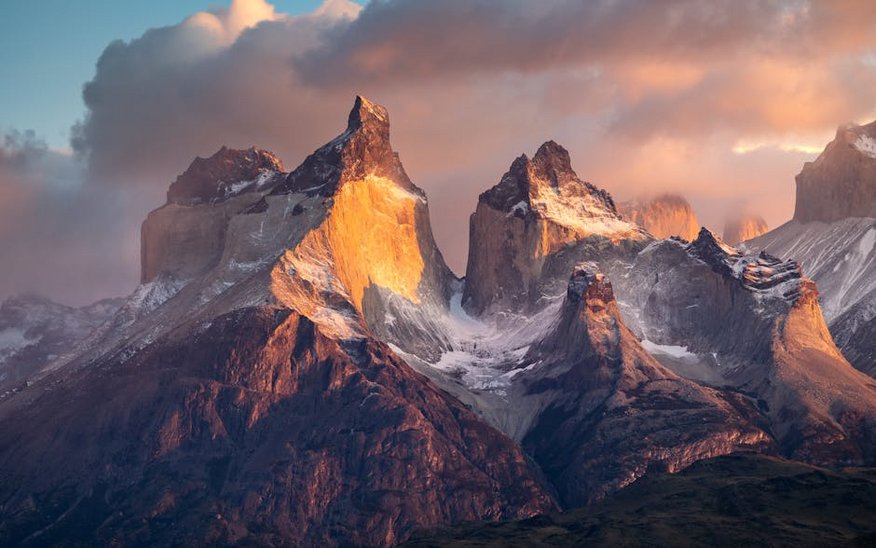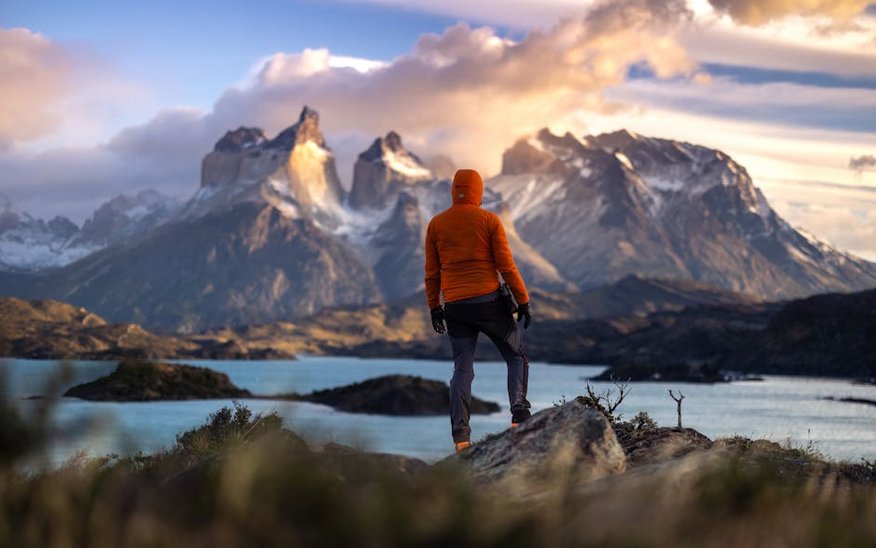Discovering the Chilean Patagonia Marble Caves: A Traveler’s Guide
Imagine gliding across turquoise waters in a small boat, surrounded by swirling patterns of blue and white marble that seem to change color with the light—this is the magical experience awaiting you at the Chilean Patagonia Marble Caves. Nestled in the remote General Carrera Lake, these natural formations have been sculpted over 6,000 years by wave action, creating cathedral-like caverns that are accessible only by water. For adventure seekers and nature lovers, visiting the Chilean Patagonia Marble Caves offers a once-in-a-lifetime opportunity to witness one of Earth’s most stunning geological wonders. The caves are part of a larger system including the Marble Chapel and Marble Cathedral, each with unique features that captivate photographers and travelers alike. Due to their isolated location in Chilean Patagonia, planning your trip requires careful consideration of weather, transportation, and timing. Whether you’re an avid explorer or simply seeking awe-inspiring landscapes, this destination promises unforgettable memories. In this guide, I’ll walk you through everything from practical logistics to hidden gems, ensuring your journey to the Chilean Patagonia Marble Caves is as smooth and enriching as possible.
Chilean Patagonia Marble Caves Essential Information – What You Need to Know
Before embarking on your adventure, it’s crucial to understand the basics of the Chilean Patagonia Marble Caves. Located in the Aysén Region of Chilean Patagonia, these caves are formed from calcium carbonate and are part of the second-largest freshwater lake in South America, General Carrera Lake. The area is known for its harsh but beautiful climate, with strong winds and rapidly changing conditions that can affect accessibility. The caves themselves are not man-made; they’re a natural wonder resulting from glacial meltwater and erosion, offering a glimpse into geological history. Visiting requires a boat tour from nearby towns like Puerto Río Tranquilo, which serves as the primary gateway. Due to the remote nature of Patagonia, infrastructure is limited, so advanced planning is essential. You’ll find that the experience varies by season, with summer providing calmer waters and longer daylight hours for exploration. Understanding these fundamentals will help you appreciate the caves’ significance and prepare adequately for your trip.
Geological Formation and History – What You Need to Know
- The caves were formed over millennia by wave erosion on solid marble, creating intricate tunnels and chambers that reflect the lake’s stunning blue hues.
- General Carrera Lake, where the caves are located, was shaped by glacial activity during the last ice age, contributing to the unique mineral composition of the water.
- Local indigenous communities, such as the Tehuelche people, have historical ties to the area, though the caves gained international attention only in the late 20th century.
- Budget option: Hostels and camping, with DIY meals and shared tours, costing around $800-1,200 USD per person for a 5-day trip, including basic boat tours from $50 USD.
- Mid-range option: Comfortable hotels in Puerto Río Tranquilo, guided tours, and meals at local restaurants, totaling $1,500-2,500 USD per person, with private boat tours averaging $100-150 USD.
- Luxury option: All-inclusive lodges with premium tours, fine dining, and personalized guides, ranging from $3,000-5,000 USD per person, including helicopter or private boat access for exclusive cave viewing.
- Chilean National Tourism Service
- Lonely Planet Patagonia Travel Guide
Location and Accessibility Details
Situated in southern Chile near the border with Argentina, the Chilean Patagonia Marble Caves are accessed via the small town of Puerto Río Tranquilo, which is about a 4-hour drive from the regional capital, Coyhaique. The journey itself is an adventure, passing through rugged landscapes and offering glimpses of Patagonia’s wild beauty. Boat tours depart from the town’s dock, and the ride to the caves takes approximately 30 minutes, depending on weather conditions. Due to the lake’s size and depth, tours are weather-dependent, and it’s common for trips to be canceled or rescheduled if winds are too strong. This remoteness adds to the allure but requires flexibility in your itinerary. I recommend checking with local operators in advance and having backup plans, as conditions can change rapidly in this part of the world.

Chilean Patagonia Marble Caves Planning Your Trip – Seasons and Budgets
Planning a trip to the Chilean Patagonia Marble Caves involves balancing seasonality, budget, and personal preferences to maximize your experience. The best time to visit is during the Southern Hemisphere’s summer months from December to February, when temperatures are milder and boat tours are more reliable. However, this is also the peak tourist season, so booking accommodations and tours early is essential to avoid disappointment. For budget-conscious travelers, consider visiting in the shoulder seasons of November or March, when prices may be lower and crowds thinner, though weather can be less predictable. Your budget should account for flights to Chile, domestic travel to Patagonia, and daily expenses like tours and meals. On average, a mid-range trip for one person can cost between $1,500 and $3,000 USD for a week, depending on your travel style. I’ll break down the costs and timing in more detail to help you create a realistic plan that fits your needs and ensures a memorable visit to these stunning caves.
Best Time to Visit Chilean Patagonia Marble Caves
The ideal time to explore the Chilean Patagonia Marble Caves is from December to February, when summer brings warmer temperatures averaging 50-60°F (10-15°C) and longer daylight hours for extended tours. During this period, the lake is generally calmer, reducing the chance of tour cancellations and allowing for clearer views of the marble formations. If you prefer fewer tourists, consider late spring (November) or early autumn (March), but be prepared for cooler weather and potential rain. Winter months from June to August are less advisable due to cold temperatures, limited tour availability, and possible ice on the lake. Regardless of when you go, always check local forecasts and book tours with reputable operators who prioritize safety. This seasonal insight will help you align your travel dates with the best conditions for photography and exploration.
Budget Planning and Costs for Your Adventure
Essential Preparation Checklist for a Smooth Journey
To ensure a hassle-free trip to the Chilean Patagonia Marble Caves, start by securing necessary documents like a valid passport and checking visa requirements—US and EU citizens typically don’t need a visa for stays under 90 days. Pack layers of clothing, including waterproof jackets and warm base layers, as Patagonian weather can shift suddenly from sunny to stormy. Essential items include sturdy hiking boots, a camera with extra batteries, and sunscreen, as the southern sun can be intense even on cloudy days. Book your flights to Santiago, Chile, and then a domestic flight to Balmaceda Airport, followed by a rental car or bus to Puerto Río Tranquilo. I also recommend purchasing travel insurance that covers adventure activities and potential cancellations. By preparing in advance, you’ll be ready to fully immerse yourself in the beauty of the caves without unnecessary stress.
Chilean Patagonia Marble Caves Top Attractions and Activities – Must-See Wonders
Once you arrive, the Chilean Patagonia Marble Caves offer a range of attractions that go beyond the main caverns, providing opportunities for photography, hiking, and cultural immersion. The primary draw is the boat tour through the marble formations, where you can witness the play of light on the water and rock, creating mesmerizing reflections. In addition to the caves, the surrounding Patagonian landscape features glaciers, forests, and wildlife like condors and guanacos, making it a paradise for nature enthusiasts. Many tours include stops at nearby points of interest, such as the Exploradores Glacier or the Baker River, which add depth to your adventure. For those seeking more active pursuits, kayaking tours allow you to paddle through the caves at your own pace, offering a closer connection to the environment. I’ll highlight the top highlights and hidden gems to help you prioritize your time and create an itinerary that captures the essence of this unique destination.
Must-See Highlights of the Marble Formations
The Marble Cathedral, Marble Chapel, and Marble Cave are the three main sections you shouldn’t miss during your visit to the Chilean Patagonia Marble Caves. The Marble Cathedral is the largest and most impressive, with towering arches that you can enter by boat, while the Marble Chapel features intricate, chapel-like alcoves perfect for quiet reflection. Boat tours typically cover all three, with guides explaining the geology and history behind each formation. For the best experience, aim for a tour during early morning or late afternoon when the light is soft, enhancing the colors of the marble. Photography enthusiasts will appreciate the opportunity to capture stunning shots of the blue-hued interiors, but remember to bring a waterproof case for your equipment. These highlights provide a core experience that defines why the caves are considered a natural masterpiece.
Hidden Gems and Local Favorites Beyond the Caves
Beyond the well-known marble structures, the area around the Chilean Patagonia Marble Caves hides lesser-known spots that offer solitude and unique perspectives. For instance, the nearby Leones River Valley features pristine hiking trails with panoramic views of the Andes, and local guides often share stories about the region’s pastoral heritage. In Puerto Río Tranquilo, you can visit small artisan markets selling handmade woolens and local crafts, giving you a taste of Patagonian culture. If you have extra time, consider a day trip to the Capillas de Mármol viewpoint on the Argentine side of the lake, which provides a different angle of the caves. These hidden gems allow you to escape the crowds and connect more deeply with the environment, making your trip even more personal and memorable.
Chilean Patagonia Marble Caves Practical Travel Information – Logistics and Accommodation
Navigating the logistics of visiting the Chilean Patagonia Marble Caves requires attention to transportation, accommodation, and local services to ensure a comfortable journey. The nearest major airport is in Balmaceda, from where you can rent a car or take a bus to Puerto Río Tranquilo, a scenic drive that takes about 4-5 hours. Once in town, most activities revolve around the lake, so having a flexible schedule is key due to weather-dependent tours. Accommodation options range from basic hostels to eco-lodges, with prices varying by season and comfort level. I’ve compiled a table below to summarize your choices, along with tips on getting around and where to stay. Remember that Patagonia is remote, so services like ATMs and supermarkets are limited—plan to carry cash and stock up on supplies in larger towns like Coyhaique before heading to the caves.
| Category | Options/Features | Price Range (USD) |
|---|---|---|
| Budget Accommodation | Hostels, camping sites with basic amenities, shared bathrooms | $20-50 per night |
| Mid-Range Accommodation | Hotels and B&Bs in Puerto Río Tranquilo, private rooms, breakfast included | $80-150 per night |
| Luxury Accommodation | Eco-lodges and all-inclusive resorts with guided tours, gourmet meals | $200-400 per night |


